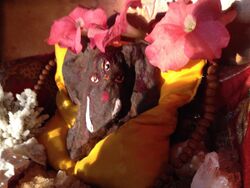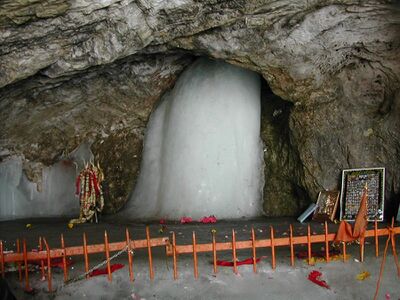Philosophy:Swayambhu
Swayambhu (Sanskrit: स्वयंभू) is a Sanskrit word that means "self-manifested", "self-existing", or "that is created by its own accord".
Often, the word swayambhu is used to describe a self-manifested image of a deity, which was not made by human hands, but instead is naturally arisen, or generated by nature. According to the Ramayana and Mahabharata, Vishnu is called swayambhu. The word etymology of swayambhu is 'Svayam' (स्वयं) which means 'self' or 'on its own' and 'bhū' (भू) which means 'to take birth' or 'arising'. This is applicable to the physical and tangible idols of Gods that we see or to the intangible yet existing God whom we cannot see. For example, the jyotirlingas are considered swayambhu- the idol of Venkateshwara at Tirumala and some other ones are considered Swayambu- which means they are not installed by any person but they exist on their own. The word Swayambhu is also applicable to Gods- for example- Vishnu is described as swayambhu in Ramayana and Matsya purana. As per the Vedas, Shiva is considered swayambhu.
The Ice Lingam at Amarnath Cave
Shiva Temples
- Keesaragutta Temple, Hyderabad
- Lord Navanepattayya Swamy Temple. Aspari, Andhra Pradesh.
- Shanaleshwara Swayambhu Temple, Nalas,[1] Rajpura, Punjab.
- Thiruvairoor Sree Mahadeva Temple, Chunakkara, Alappuzha district, Kerala
- Gyanvapi shivling, Varanasi.
Ganesha Temples
- Swayambhu Sri Abhista Gnana Ganapathi Temple
- Hattiangadi Siddi Vinayaka Temple
See also
- Acheiropoieta in the Christian tradition, literally, "works made without human hands"
- Perceptions of religious imagery in natural phenomena
- Swayambhunath
- Soyombo symbol
References
- ↑ "Nalas – (India)" (in en-US). https://shanaleshwara.in/.



